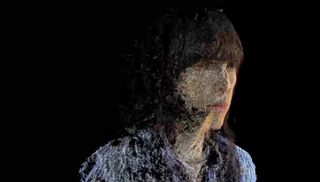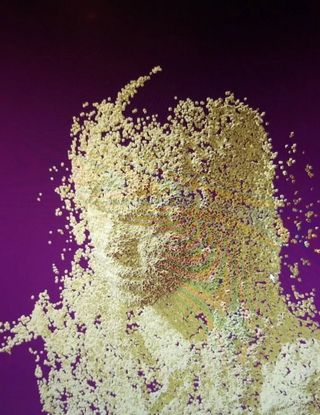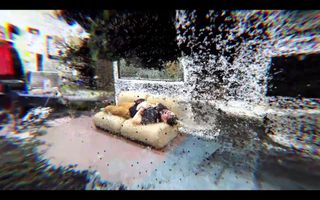Today’s students have more access to sophisticated, professional programs than ever before. Thanks to new institutional models in educational licensing, undergraduate and graduate students across the disciplines can build fluency in established suites and emerging software programs.
The equation changes dramatically after the academy, however. Aspiring artists who want to continue working with commercial tools can face financial burdens that extend well beyond student loans.
Adobe, in particular, is a juggernaut. More than 90 percent of the world’s creative professionals use Photoshop. Adobe Creative Cloud mobile apps have been downloaded 310 million times, according to the company's 2019 report. An Adobe Creative Cloud single app subscription costs $20.99 per month, and the Creative Cloud all apps plan clocks in at $52.99 per month. After free trials end, stark realities set in for recent grads.
Forging a New Path
Interdisciplinary artist Sishir Bommakanti has a unique perspective on software, particularly 3D scanning and animation programs. Bommakanti received his undergraduate degree in Illustration at Ringling College of Art and Design in Florida, and received his master’s degree at the Minneapolis College of Art and Design in Minnesota. Both degrees focused on illustration, storytelling, and experimental approaches to image making.
“I focused on traditional drawing and painting for my studies,” he said, “but during that time, I learned animation completely on my own, as well as 3D scanning. I also started learning about point cloud processes to visualize data.”
Hard Truths About Software
With interests in various mediums, Bommakanti is passionate about open-source software and the open-source community.
“A reoccurring issue for students,” he said, “is their fear that they will lose access to their mediums of practice after they finish school. Industrial-grade programs are expensive, and students just coming out of school with debt, and learning how to work with loan repayments, are not thinking about investments to these programs.”
The leasing/rental model allows for monthly or yearly payments. This flexibility may appeal to some artists, but there is a catch. “Trying to freelance as a 3D animator involves paying a monthly or yearly license for a program, but then you'll need Adobe programs like Photoshop, Premiere, and After Effects, which is another subscription."
If an artist is also developing a sculpture practice, programs like ZBrush and Mudbox are different from a standard 3D-modeling program. In some cases, a dedicated simulation program is required—yet another license. Users will need a license for a rendering solution, such as V-Ray, Octane, or Redshift. These various subscriptions can add up for an emerging artist who wants to pursue an animation practice, or a creative professional building a freelance business.
One solution is to pursue open-source programs. “I use Blender 2.8 for a lot of my work,” Bommakanti said. “Not only is Blender free to download, but it also has an incredibly strong community that allows for better plugins and optimization. Recently, its quality has been praised. Major animation companies are adopting it to help cut costs.”
Unity and Unreal are also "free-to-use" software, but with conditions. This approach allows artists and programmers to learn new languages and skills without steep financial commitments—or turning to piracy.
There is a healthy debate about the best possible path for software after graduation, but what is clear is that competency isn’t enough. Digital artists need access.
Scalability
Some open-source suites can be more difficult to find than commercial solutions, but taking the open route will ultimately help higher education students as they mature in their careers, Bommakanti said. “What you learn in open source can be adapted to other programs.”
Without lower-cost alternatives, Bommakanti worries that VR, 3D scanning, and animation will become cost-prohibitive skillsets. Workstations and peripherals are also significant investments. Exclusivity rather than inclusion will stymie broader innovation. The vitality and creativity of digital disciplines might suffer.

Experimental Practice
Exploring new methodologies and new software programs is integral to Bommakanti’s practice. He aims to push the 3D category in experimental directions, from capture and data visualization to collage. For Bommakanti, each mode can articulate a different message.
“My approach is more of a volatile chemist, creating chemical reactions with experimentation,” he said, but "there is always one thread of a story or event. I find myself leaning towards a narrative, regardless of medium or approach.”
Through his unexpected practice, Bommakanti hopes to promote open-source, free, and affordable alternatives.
“I personally didn't even consider this path until I was able to build my first computer. Even with a mid-range computer, one can obtain free platforms like Blender, Unity, and more affordable programs such as Agisoft PhotoScan to experiment with 3D scanning and volumetric filmmaking, without worrying about the price. These communities are built on support, and now being part of these communities, I'm posting my process freely as a thanks.”
Community Collaboration
Bommakanti often sends his 3D art to the subjects he scans as keepsakes while also viewing the digital artifacts as records of impermanence. “This is what we are exploring for the future,” he said, “how this tool can be used for accessibility.”
He pointed to a Unity developer, Keijiro Takahashi, who provides free scripts for the Unity community that can be leveraged for Photogrammetry.
For Bommakanti, collaboration is also practical. “If I have the opportunity to create a library of point cloud assets from crowdsourced images, and I am able to use them for my experiments, I would, in return, send 3D data back for their own use.”
3D for Documentation
3D scanning is used in documentation missions across the Middle East, and it can be controversial. “It's a layered discourse,” Bommakanti said, with myriad viewpoints.
“3D capture should never be a replacement for restoration,” he noted, “but purely used as a form of documentation that can help in the process.” Digital data—from a million pictures of a church or a 3D scan—will inevitably be edited, making exact replications impossible. There is another aspect to the restoration conversation revolving around mimesis and limits of imitation. “My stance is that 3D scanning is a tool of documentation, but not in restoration.”
Within 3D scanning models are point clouds—sets of data in space that contain the X, Y, and Z coordinates and RGB color information. One example of a complex dense point cloud video produced for archival purposes is the scan of an endangered Heritage Site in Syria.
Fixed Yet Unstable
Particle emitters are used in 3D to make fluids, sand, particles and other reactions. Often used in a practical process for commercial, realistic productions, Bommakanti is utilizing particle emitters for experimental processes. The goal is to see how scanned environments and people look once they turn into particles that are constantly moving yet retaining some form. Inspired by the “literal atoms we are created from,” and micro designs creating macro structures, he is using test scans as tools of inquiry. Conceptually, his work is informed by “the unstable environments of dreams.”

Document to Distort
Bommakanti’s practice converges photography, collage, and storytelling sensibilities. He creates scans of his daily life—people he knows, places he sees, mundane events, and sights of the quotidian—knowing that they will be transformed.
“3D scanning gives me the opportunity to archive ‘the everyday’ and use the archives within an illustrative process,” he commented. “I am scanning these with the intention that they will be collaged, distorted, and be used as elements to build my own worlds.”
Data Meets the Mythological
Both data-driven and divergent, Bommakanti's practice bridges the realms of the surreal, mythological, and wonderfully weird. Seeing raw data motivated him to contextualize it within an artistic framework. “How scientific data is visualized inspired me to make these 3D environments,” he said.
The science of rendering is precise, however, and errors have become a binding factor in his practice. “I consider them happy accidents, to paraphrase Bob Ross,” he said.
Capturing point clouds and rendering them knowing that they will not render accurately is a deliberate choice. The trial and error informs the process, and the method allows for controlled experiments. “I like to think of them as impressionism, where the impression of the scene or person is there," Bommakant said, "but is simplified in its form, like a Cezanne.”

Cinematic Eye
A recent project brings Bommakanti closer into the realm of experimental animation. In the video, he and artist Brian Heart mix point cloud processes with cinematic, narrative elements. “Eventually, the plan is to create an animation that feels like a dream world in which the camera travels,” Bommakanti said.
Margot Douaihy, PhD, is the author of three books. Her latest is Scranton Lace (Clemson University Press). Find her on Twitter @MargotDouaihy.
MORE INFO
Sishir Bommakanti
https://sishir.com
http://sishirphoto.tumblr.com/
3D Scanning Artists
https://www.instagram.com/huangwhsuan
https://www.instagram.com/eggnot1
Alexander Porter, Creator of Depthkit
https://www.instagram.com/alexicon3000
Az Balabanian, Photogrammetry Artist & Cinematographer, & Host of Research VR Podcast
http://azadux.com/photogrammetry
Brian Heart
https://www.instagram.com/brain____________________heart/
Keijiro Takahashi
https://www.keijiro.tokyo
Volumetric Filmmakers Group
https://www.facebook.com/groups/volumetricfilmmaking

